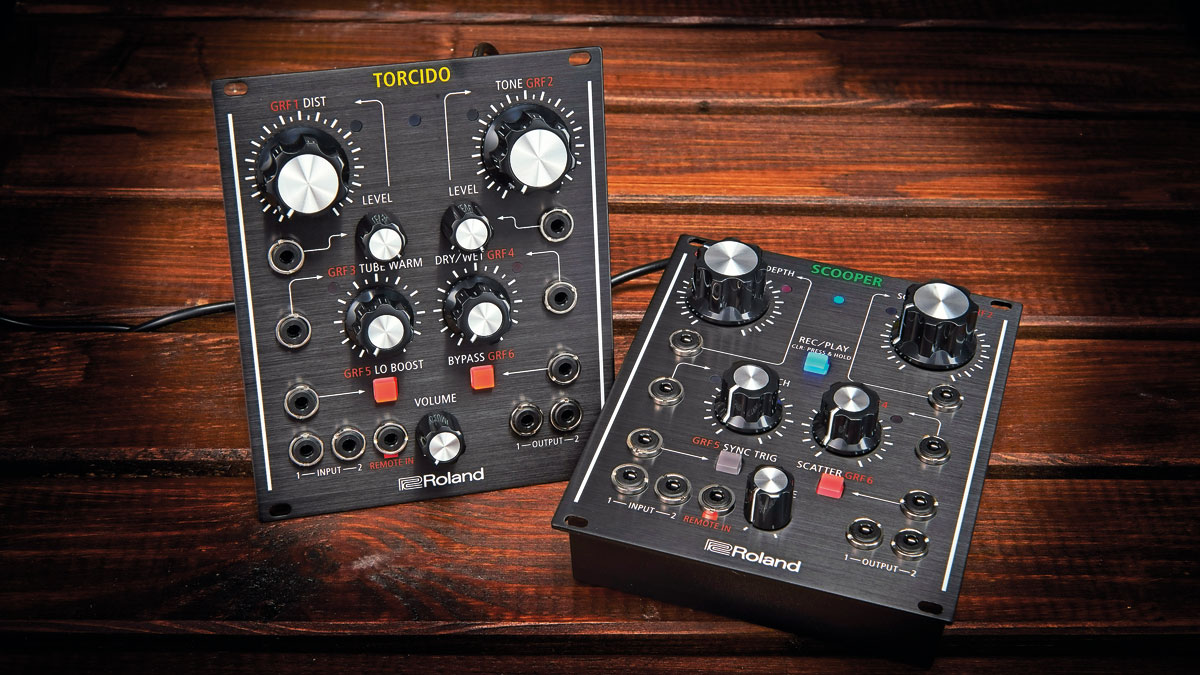MusicRadar Verdict
Distortion is one area where tastes and flavour vary quite heavily, so, in sonic terms at least, Torcido is potentially competing against a plethora of guitar pedals (that may be considerably cheaper).
Pros
- +
Wet/dry control.
Cons
- -
Some stepping noted. Guitar pedal may be cheaper.
MusicRadar's got your back
Roland's Aira onslaught continues, with the company putting out four new effects boxes - the Bitrazer, Demora, Torcido and Scooper.
Today we're looking at the Torcido, Roland's distortion processor.
As with all other elements in the Aira range, this product utilises digital process (at a sample rate of 96kHz) and comes armed with audio interfacing capabilities courtesy of its USB port.
Like the recent System-1m, the unit also features a plentiful supply of analogue ins and outs that embrace both audio and CV control, and the ability to integrate comfortably into a Eurorack modular system.
The unit's front panel is dominated by two large Moog-style knobs. Next to each is a smaller knob to adjust the amplitude of external CV signals (plugged into the adjacent 3.5mm socket). The associated LED's brightness is used for visual feedback.
A couple of sub-parameters get their own mid-size controls. These can also come under external control, but this time any CV scaling needs to happen before arriving at the unit. Two switches provide simple additional parameter or bypass on/off features, with a couple of mini-jack inputs for Gate control.
Things are rounded off with global Volume, two mono inputs and outputs and the mysterious Remote In.
Want all the hottest music and gear news, reviews, deals, features and more, direct to your inbox? Sign up here.
As with the System-1m this box arrives with its own PSU for desktop use, but you'll also find a Eurorack power connector and four screws for racking. As such, the only connector on the rear is for USB connection to your computer.
As with all other units in the range, this handles both MIDI, audio and system updates. The box itself can also be used for general audio interfacing duties, though once again the 96kHz sample rate is fixed and Roland is not especially clear about what the ten in/out audio ports on your computer are actually routed to.
None of this is explained in the semi-generic two page owner's manual - in fact, nearly everything about using he init is given only a cursory explanation. We understand that digital kit updates often push manuals out of date pretty quickly, but Roland's approach certainly doesn't help you get the best out of a new box of tricks.
The Torcido is a distortion processor that claims to conjure up the 'classic and Tube Warmth. There is noticeable brightening of tone as the Tube Warm knob is turned up. Having a Wet/Dry control is useful for adding some subtlety to the distortion process, though the potentially massive level differences between distorted and dry signal mean that only a slight twist of this control can cause massive changes,
Despite the much-touted 24-bit controls having over 16 million steps of resolution, some stepping was in evidence here, which was rather disappointing (though it did lessen slightly after a system update). An auto-levelling option for better matching between input and output could be quite useful for this type of effect.
In terms of custom signal paths, you get the same 15 additional building blocks under the hood as before, so you can't - at the moment - reprogram the Torcido to be a Demora.
